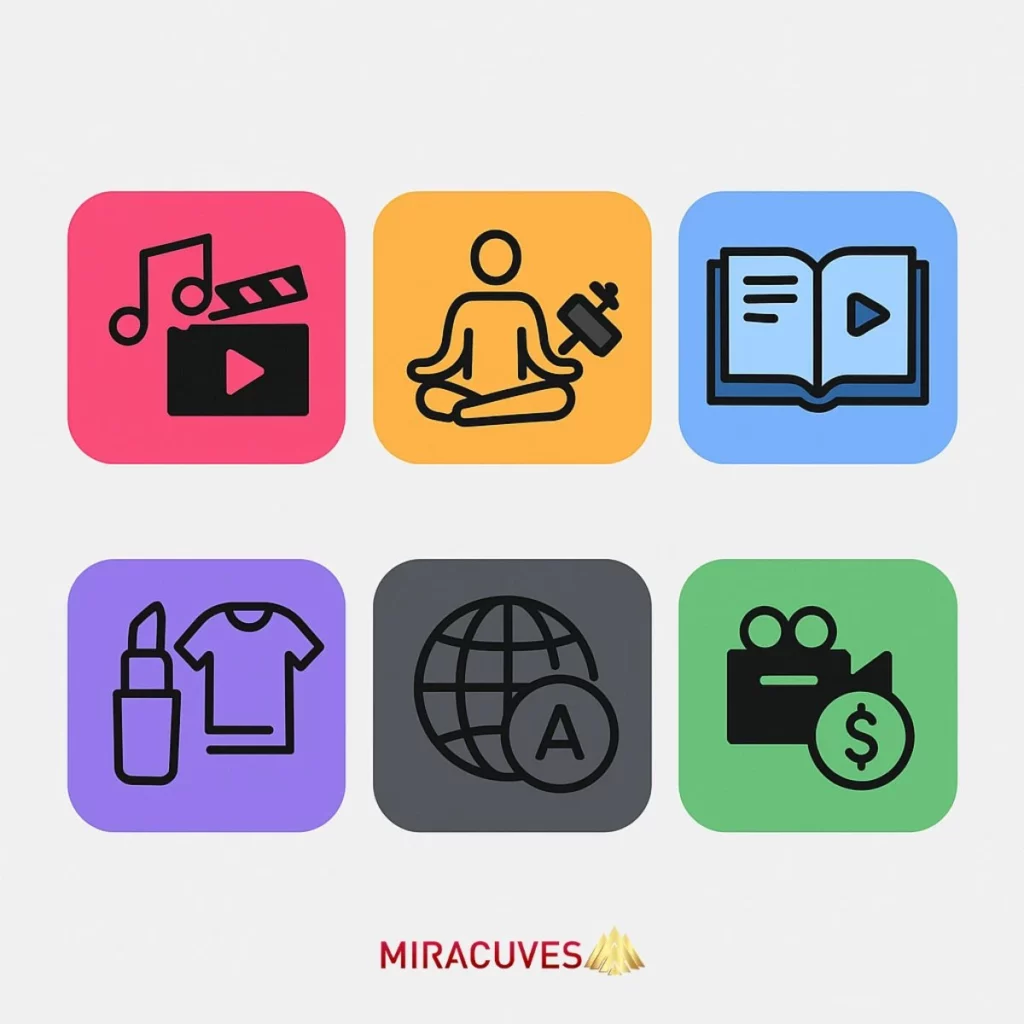How to Build a Short Video App Like TikTok
An Actionable Guide for Startups, Founders & Agencies
It’s no secret that TikTok reshaped the internet. What started as a lip-syncing app is now a global phenomenon with over 1.5 billion monthly active users and an average watch time of 95 minutes per user, per day. Its explosive growth hasn’t just entertained users — it’s inspired a wave of entrepreneurs looking to build their own short video platforms.
If you’re one of them, you’re in the right place.
In this guide, we’ll break down everything you need to know to build a short video app like TikTok — from planning and choosing your tech stack to rolling out features that actually keep users scrolling. Whether you’re aiming to launch the next big social app or dominate a niche market, the path starts here.
Let’s get started.

Define Your Niche and Audience
Before you write a single line of code, you need clarity on one thing: who are you building this app for?
TikTok found success by leaning into short, addictive content with viral potential. But as the market expands, so do the opportunities. Your app doesn’t have to compete with TikTok head-on — it just needs to serve a specific audience better than anyone else.
Here are a few niche directions you can explore:
Entertainment-first → Music videos, lip-syncs, comedy skits, reaction videos
Fitness and wellness → Bite-sized workouts, yoga flows, diet tips
Education → Quick tutorials, language learning, study hacks
Fashion and beauty → Product demos, styling tips, influencer content
Regional or cultural → Focus on local languages, trends, or underserved demographics
Creator-first platforms → Where monetization tools are central from day one
Understanding your niche helps shape your app’s design, features, and growth strategy. It also makes your platform easier to market and monetize later.
Map Out the Core Features
Now that you’ve defined who you’re building for, it’s time to decide what your app actually needs to do.
The features you include will shape your user experience, development timeline, and overall success. While we’ll break down the full list in our article on TikTok clone features, here are the essentials you’ll want to get right from day one:
🔹 For Users:
Quick sign-up/login → Via phone number, email, or social media
Video recording and editing → Filters, music overlays, trimming tools, effects
AI-powered feed → Personalized “For You” section based on user behavior
Like, comment, and share → Basic engagement mechanics that fuel virality
Duet and stitch features → Let users collaborate or react to others’ videos
Push notifications → To boost re-engagement and promote new content
Multi-language and localization → Especially if you’re targeting global or regional markets
🔹 For Admins:
Content moderation tools
User management dashboard
Analytics and performance insights
Choose the Right Monetization Model
Even if your app goes viral, it needs a solid plan to turn attention into revenue. That’s where your monetization model comes in.
Here are some proven approaches inspired by TikTok and other short video platforms:
🔹 Ad-based Revenue
Display ads (banner, in-feed)
Video ads (before or during videos)
Brand-sponsored challenges or promoted content
🔹 In-App Purchases
Users buy virtual coins or gifts to tip their favorite creators
These coins can be withdrawn by creators, with a small commission going to the platform
🔹 Premium Access
Offer advanced filters, analytics, or editing tools behind a subscription paywall
Enable creators to charge for exclusive content
A strong monetization model makes your platform attractive to investors — and sustainable in the long run.
👉 Want a detailed breakdown of each option? Keep an eye on our article about the TikTok clone business model.
Build the Right Tech Stack and Infrastructure
Short video apps handle massive volumes of content and real-time interactions — which means your tech stack needs to be fast, scalable, and reliable.
Here’s what powers a TikTok-like experience under the hood:
🔹 Frontend Technologies
Mobile apps: Swift (iOS), Kotlin (Android)
Web (optional): React, Vue.js
🔹 Backend Stack
Languages: Node.js, Python
Databases: MongoDB, PostgreSQL for user/content data
Storage: AWS S3 or Google Cloud for high-volume video hosting
Streaming: FFmpeg (for video processing), CDN integration for fast content delivery
AI & Recommendations: Firebase ML, TensorFlow Lite, or third-party APIs to power the For You feed
🔹 Infrastructure & DevOps
AWS, Azure, or Google Cloud for scalability
Docker, Kubernetes for deployment
GitHub/Jenkins for CI/CD workflows
Selecting the right stack from the start helps avoid performance issues and prepares your app to grow smoothly with your user base.

Launch With an MVP and Scale Wisely
You don’t need to launch with every feature TikTok has. In fact, trying to do that might slow you down or blow up your budget. The smarter approach? Start with a Minimum Viable Product (MVP).
Here’s what that looks like:
Core features: video creation, user profiles, feed, engagement tools (likes/comments)
Basic moderation and analytics on the admin side
A clean, intuitive UI with room to grow
Once your MVP is live and users are engaging, use real feedback and usage data to guide what you build next — whether it’s live streaming, advanced filters, or creator monetization tools.
Launching lean helps you go to market faster, test your idea with real users, and scale without burning through resources.
Work With the Right Development Partner
Even with a solid plan and feature list, execution is everything. That’s why choosing the right TikTok clone development company matters more than most founders realize.
Here’s what to look for:
Proven experience with short video or social media apps
A clear process — from design and development to launch and post-launch support
Customization capabilities so your app stands out (not just a copy-paste clone)
Ongoing support for scaling, bug fixes, feature updates, and performance optimization
Working with a company like Miracuves, which specializes in ready-to-launch, customizable TikTok clones, gives you a head start — saving you time, money, and technical headaches.
Conclusion
Building a short video app like TikTok isn’t just about mimicking a trend — it’s about tapping into a content format that’s shaping the future of entertainment, education, commerce, and social interaction.
By understanding your niche, choosing the right features, and launching with a scalable tech foundation, you’re not just creating an app — you’re building a platform with serious viral potential.
And remember, you don’t have to do it alone.
With the right partner like Miracuves, you can go from idea to launch faster — and smarter. We specialize in high-performing, fully customizable TikTok clone solutions designed for startups, creators, and agencies looking to make an impact.
Frequently Asked Questions
Development costs typically range from $20,000 to $200,000+, depending on the app’s complexity, feature set, and your development partner’s location.
Core features include video recording/editing, user profiles, AI-powered feed, like/share/comment tools, and basic admin controls.
Building an MVP usually takes 3 to 6 months, while a full-featured app can take 6 to 12 months or more.
A ready-made TikTok clone from a provider like Miracuves saves time and money — and can still be fully customized to fit your niche.
Popular models include ads, in-app purchases (coins, gifts), premium features, and creator commissions.


